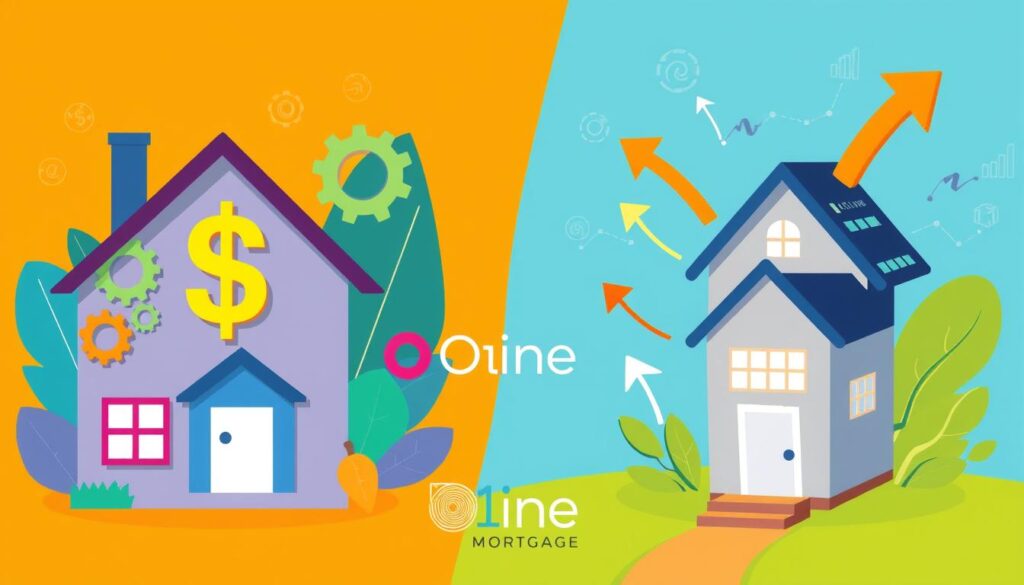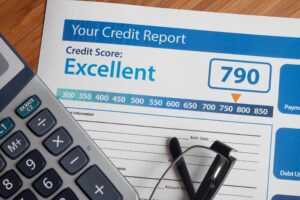Amid the landscapes of financial products available to homeowners, a Home Equity Line of Credit, or HELOC, stands out as a versatile and accessible means to unlock home value. In essence, HELOCs serve as flexible financing solutions, offering a reliable path for borrowing against home equity when the need arises. We see HELOCs as a formidable tool in a savvy homeowner’s arsenal, enabling them to manage their financial obligations creatively while taking advantage of the value they’ve built in their property.
At our core, we understand that tapping into home equity should be approached with a blend of caution and strategic planning. A HELOC, akin to a second mortgage, transforms your accumulated equity into a potential line of credit, granting you the power to access funds up to a predetermined limit. For homeowners, this means a cushion for managing unexpected expenses or capitalizing on investment opportunities. It’s crucial to remember, however, that with great borrowing power comes the responsibility to uphold the loan terms, as our homes guarantee these funds.
Whether you’re remodeling your home or contemplating large-scale purchases, HELOCs stand as testimony to flexible financing solutions. Yet, your home assumes the role of collateral, underscoring a reality where strategic financial management is paramount to avert the risk of losing your home. Embracing this financing path is a decision we must make with both our eyes on the evolving economic landscape and our feet planted firmly on the grounds of fiscal prudence.
Key Takeaways
- HELOCs are unique financial instruments enabling homeowners to borrow against home equity.
- They offer flexible financing solutions, akin to using a credit card, but with the home as collateral.
- Unlock home value while maintaining the security that lenders require for providing lower interest rates.
- Understanding personal creditworthiness and loan-to-value ratios is imperative to utilizing HELOCs effectively.
- Strategic planning and financial management are essential when tapping into your home’s equity to secure a loan.
Understanding the Basics of Home Equity Line of Credit (HELOC)
A Home Equity Line of Credit, often referred to by its acronym HELOC, is an increasingly popular financial tool in the United States that leverages the equity in your home. This form of equity financing provides flexible access to funds, allowing homeowners to borrow against the equity they have built up in their property. In this section, we’ll delve into what HELOCs are, how they differ from traditional home equity loans, and the critical role that home equity plays in securing these loans.
What is a HELOC?
A HELOC is a type of revolving home equity credit that gives you access to a pre-approved amount of money which you can draw from as needed. Unlike conventional loans that disburse a lump sum, HELOCs work much like credit cards but are secured by your home’s equity. This setup provides a flexible solution for funding larger ongoing expenses such as home renovations, college tuition, or medical bills.
How Does a HELOC Differ from a Home Equity Loan?
While both financial products rely on using your home as collateral, the key difference lies in the disbursement and repayment terms. A loan against home equity typically involves receiving a fixed amount of money upfront, with a repayment plan established at the outset. In contrast, a HELOC offers a draw period where you may borrow varying amounts up to the limit, paying interest only on the sum you’ve used. Post the draw period, the repayment phase starts where both principal and interest payments are made.
Securing Your Loan: The Role of Home Equity
The amount of equity you have in your home is central to determining your borrowing capacity. Equity is calculated by taking the current market value of your property and subtracting any outstanding mortgage or other liens from it. This figure represents the real financial equity you possess, which serves as collateral for a HELOC. The higher your equity, the more financing options may be available to you.
| Type of Credit | Characteristics | Suitable For |
|---|---|---|
| Home Equity Loan | Fixed lump sum, fixed interest rate, set repayment term | One-time major expenses like home improvements |
| HELOC | Revolving credit, variable interest rates, draw and repayment periods | Ongoing expenses or projects, flexibility in fund usage |
The Perks and Pitfalls of a HELOC
As we dive into the intricacies of using a Home Equity Line of Credit (HELOC), it’s essential to grasp both the benefits and risks associated with this form of flexible borrowing. Ensuring you have comprehensive home equity access can significantly impact your financial strategy, but it’s critical to be aware of the dangers as well.
Advantages of Choosing a Home Equity Line of Credit
One of the significant advantages of a HELOC is its role as lower cost loans compared to other types of credit. This is particularly attractive for major expenses like home renovations or education costs, where the ability to borrow large sums at lower interest rates can be immensely beneficial.
- Flexibility in borrowing: Only withdraw what you need, when you need it, making it adaptable to various financial requirements.
- Revolving credit: As you repay the borrowed amount, your credit replenishes, allowing you to use it again.
- Potential tax benefits: Interest paid on a HELOC is often tax-deductible if the funds are used to buy, build, or substantially improve the taxpayer’s home that secures the loan.
Understanding the Risks of Home Equity Debt
Tapping into home equity does come with its set of risks. The most glaring is the potential threat to your homeownership due to the risk of foreclosure in the event of defaulting on loan payments. Moreover, with fluctuating market values, there is always the risk that the home’s value could decline, pushing the borrowed amount to exceed the worth of the property, a scenario commonly referred to as being “underwater”.
- Risk of foreclosure: If payments are not made timely, the bank has the right to reclaim your home.
- Variable interest rates: HELOCs typically have adjustable rates, which can increase monthly payments unpredictably.
- Market value fluctuation: A decline in home value could lead to negative equity.
Understanding these perks and pitfalls empowers homeowners to make informed decisions that align with their financial landscapes. Using this knowledge, one can navigate the complexities of lower cost loans, flexible borrowing, and home equity access associated with a HELOC.
Calculating Your Loan-to-Value Ratio and Borrowing Power
Understanding your borrowing power when considering a home equity loan is crucial. This is commonly measured through your Combined Loan-to-Value (CLTV) ratio, which plays a fundamental role in determining home equity loan eligibility. We’ll explore how this ratio is calculated and its significance in evaluating your borrowing capacity.
How Lenders Determine Your Eligibility
Lenders assess your home equity loan eligibility based on several key factors, with the CLTV ratio standing out as particularly pivotal. This ratio helps lenders evaluate the risk of loaning money against your home’s value. A favorable ratio means that you possess substantial equity in your property, which enhances your profile as a low-risk borrower.
The Impact of Creditworthiness on Loan Approval
While the CLTV ratio helps establish the maximum loan amount, your creditworthiness impacts the terms of the loan, such as the interest rate. A strong credit score can lead to more favorable loan conditions, which in turn affects your borrowing power. It is therefore advantageous to maintain a healthy credit score to maximize your chances of getting better loan terms.
In summary, understanding your CLTV ratio and creditworthiness can significantly impact the terms and amount of your home equity loan, directly influencing your financial flexibility and stability.
Home Equity Line of Credit (HELOC)
As homeowners, we continuously seek efficient ways to leverage our investments. Tapping home equity through a Home Equity Line of Credit (HELOC) represents a strategic avenue for funding substantial expenses or key projects. One pivotal aspect of this option is the HELOC application process, which meticulously evaluates our creditworthiness and the present market value of our homes.
Understanding the flexibility of HELOCs can profoundly impact our financial strategies, especially considering the variable interest rate that accompanies most agreements. These rates follow indices such as the U.S. Prime Rate, which means our monthly payments could fluctuate over time. As prudent homeowners, it is essential to grasp how these intricacies affect our borrowing power.
We benefit from understanding how our equity can serve not just as a financial cushion but also as a versatile tool for future planning.
Here’s a clear breakdown of key components to consider during the HELOC application process:
- Assessment of your current financial status and credit history
- Appraisal of your home to ascertain current market value
- Exploration of different HELOC offers to find the most suitable variable interest rate
| HELOC Component | Details |
|---|---|
| Equity Evaluation | Your home’s current market value minus any outstanding mortgage balance |
| Creditworthiness | Your credit score, income stability, and debt-to-income ratio |
| Interest Rate Type | Usually varies based on the prime rate, altering the monthly repayment amount |
Comparing Home Equity Loans and HELOCs
When delving into home equity financing options, understanding the critical differences between fixed-rate home equity loans and adjustable-rate HELOCs becomes essential. Each option serves distinct financial planning and budgeting needs, depending on your financial goals and risk tolerance.
Lump-Sum vs. Revolving Credit
Fixed-rate home equity loans offer a lump-sum payment, which is ideal for homeowners who need a specific amount upfront, especially for significant one-time expenses like home renovations or consolidating high-interest debts. On the other hand, adjustable-rate HELOCs provide a revolving credit line, perfect for ongoing expenses where you may require flexible access to funds over time.
Fixed Interest Rates versus Adjustable Rates
Fixed-rate home equity loans are preferred by those looking for predictability in their budgeting. The interest rate remains constant throughout the term of the loan, meaning your payments are consistent. Conversely, adjustable-rate HELOCs might start with lower interest rates compared to fixed-rate loans, but they can fluctuate over time based on prevailing market conditions, which could affect your repayment amount.
| Feature | Fixed-Rate Home Equity Loan | Adjustable-Rate HELOC |
|---|---|---|
| Interest Rate | Fixed | Variable |
| Payment Stability | High (constant payments) | Low (payments can change) |
| Funds Disbursement | Single lump sum | Revolving credit (as needed) |
| Use Case | Suitable for one-time projects | Flexible, suitable for ongoing needs |
Home Equity Line of Credit Utilization Strategies
Understanding how to leverage a Home Equity Line of Credit (HELOC) can significantly enhance your financial flexibility. By utilizing strategic borrowing through a HELOC, you can address major expenses while optimizing your financial planning. Here, we explore practical ways to deploy a HELOC for home improvement financing, managing education expenses, and other significant financial needs.

Firstly, home improvement financing through a HELOC can be a wise investment, as enhancing your property can substantially increase its market value. This form of strategic borrowing not only improves your living standards but also boosts the asset side of your balance sheet. Careful selection of home improvement projects is crucial; focus on renovations that promise the best return on investment such as kitchen remodels, bathroom updates, and energy-efficient upgrades.
Secondly, a HELOC can be an effective tool for covering education expenses. Education is a cornerstone for future success, and using a HELOC to fund education can be considered an investment in your or your family’s future earning potential. However, it’s essential to align this strategy with your long-term financial goals and ensure that the repayment terms are manageable within your budget.
Moreover, consolidating high-interest debts is another strategic utilization of HELOCs. By paying off multiple debt sources with a HELOC, you can potentially reduce your interest burden and streamline your finances into a single, lower-interest payment. This strategy can lead to significant savings and simplify personal financial management.
| Utilization Strategy | Benefits | Considerations |
|---|---|---|
| Home Improvement | Increases property value, enhances living space | Select projects with high ROI; consider overall budget impact |
| Education Expenses | Invests in future earning potential | Ensure alignment with financial goals; manage repayment terms |
| Debt Consolidation | Reduces interest burden, simplifies payments | Analyze overall debt reduction versus potential risks |
To maximize the benefits of a HELOC, it’s imperative to have a clear plan for its use and repayment. Strategic financial management ensures that you leverage these funds effectively without compromising your financial stability.
A Step-by-Step Guide to Applying for a HELOC
Embarking on the HELOC application guide can seem daunting, but with the right knowledge of the mortgage lending process and understanding lender requirements, it’s a straightforward pathway. We’ll guide you through the necessary steps to ensure a smooth and successful HELOC application.
Gathering Necessary Documents
Before you can secure a home equity line of credit, collecting essential documents is your first crucial step. This is where the process begins:
- Proof of income: Gather your recent pay stubs, tax returns, and W-2 forms for the last two years.
- Employment verification: Documentation that confirms your current employment status and income stability.
- Current mortgage statements: Including details about your existing mortgage, such as the principal balance and lender information.
- Home appraisal reports: Recent appraisals can provide the current market value of your property, which is crucial for determining your available equity.
Understanding Lender Requirements
Navigating the lender requirements is the next significant step in the HELOC application guide. Requirements may vary, but generally include:
- Good credit score: Most lenders will look for a strong credit history, which reassures them of your ability to repay the line of credit.
- Debt-to-income ratio: This ratio measures your total monthly debt against your total monthly income, which helps lenders assess your financial health.
- Stable employment record: Lenders typically prefer borrowers who have consistent, reliable employment.
- Favorable combined loan-to-value (CLTV) ratio: This ratio helps lenders determine the risk associated with lending, based on the equity you already have in your home.
Understanding the mortgage lending process and meeting your lender’s criteria not only streamlines the application process but also enhances your chances of getting a favorable line of credit. By ensuring all your documents are in order and familiarizing yourself with the lender requirements, you can navigate the HELOC application more confidently and efficiently.
HELOC Repayment: What to Expect During Draw and Repayment Periods
Understanding the dynamics of a Home Equity Line of Credit (HELOC) is crucial for effective financial planning. As we navigate through the HELOC draw period and transition into the repayment phase, it’s important to assess the impact of interest-only payments and devise a robust repayment strategy.
Interest-Only Payments and Their Impact
During the HELOC draw period, borrowers often benefit from the flexibility of interest-only payments. This arrangement allows you to manage your cash flow more efficiently by reducing the amount you owe monthly. However, since you’re not paying down the principal, the total loan cost might increment over time if these payments are made extensively.
Preparing for the Transition to Full Repayment
As the draw period concludes, transitioning to a repayment phase that includes both the principal and interest can be challenging. Planning your repayment strategy early can avert financial strain and facilitate a smoother change. It’s essential to review your monthly budget, consider future financial goals, and possibly consult with a financial advisor to align your HELOC repayment with your broader financial plans.
Here’s an overview of common approaches to managing the transition from interest-only payments to full repayment:
| Strategy | Benefits |
|---|---|
| Early Repayment | Less interest over the life of the loan, reduced long-term financial burden |
| Refinancing | Possibly lower interest rates, consolidated debts |
| Structured Monthly Budget | Improved financial management, predictable expense planning |
HELOCs vs. Refinancing: Finding the Right Option for You
When homeowners consider leveraging their home equity, the debate often centers around mortgage refinancing vs. HELOC. Choosing the appropriate option largely depends on specific financial goals and the prevailing market conditions.
Benefits of Cash-Out Refinancing Over HELOCs
The refinancing advantages are numerous, particularly when it involves cash-out refinancing. This financial strategy allows homeowners to refinance their current mortgage into a new one with a higher amount than they owe, pocketing the difference. This is often a compelling choice for those looking to consolidate debt or finance home improvements at potentially lower interest rates than a traditional HELOC.
Assessing Impact on Your Mortgage Terms
Analyzing the impact on one’s mortgage terms is crucial. Refinancing might extend the term of the loan or affect monthly payments and interest rates. It’s essential for homeowners to work out if these changes align with their long-term financial plans, comparing them meticulously to what a HELOC would offer.
| Feature | Cash-Out Refinancing | HELOC |
|---|---|---|
| Interest Rate Type | Fixed | Adjustable |
| Impact on Mortgage Term | Possible Extension | No change |
| Upfront Costs | Higher due to closing costs | Lower |
| Monthly Payment | May increase if term extended | Only interest initially |
In our journey to home equity optimization, it becomes clear that each option serves different needs. A HELOC offers flexibility and continuous access to funds, akin to a credit card, but with a potentially variable interest rate that might increase over time. On the other hand, cash-out refinancing provides a lump sum at a fixed interest, often at a lower rate than a HELOC, with predictable repayment terms.

Conclusion
Throughout this exploration of Home Equity Lines of Credit, we’ve equipped you with essential knowledge to navigate the complexities of HELOCs. Whether considering this option for debt consolidation, home improvements, or other financial ventures, strategic home equity management remains a fundamental principle. It allows homeowners to harness the HELOC benefits, which include flexible access to funds and potential tax advantages, while making informed decisions about their financial future.
Understanding the nuances between HELOCs and other financing methods, such as home equity loans or mortgage refinancing, stands as a cornerstone to making informed decisions. Being prudent with your home’s equity, comprehending the loan-to-value ratios, anticipating adjustable rates, and preparing for repayment periods are pivotal to maintaining financial stability and maximizing the advantages of your borrowing power.
Ultimately, your financial journey is personal and unique, with a HELOC serving as a potential tool to meet your objectives and aspirations. Making informed decisions, coupled with vigilant fiscal planning and awareness of market conditions, can bolster the long-term success of your endeavors. As you embrace the scope of possibilities that HELOCs present, our guidance is to tread thoughtfully, prioritize your financial wellness, and utilize these insights to further your personal and financial goals responsibly.







